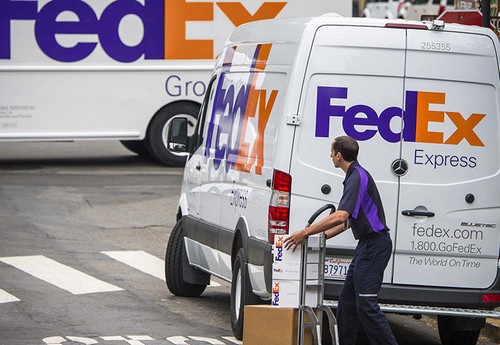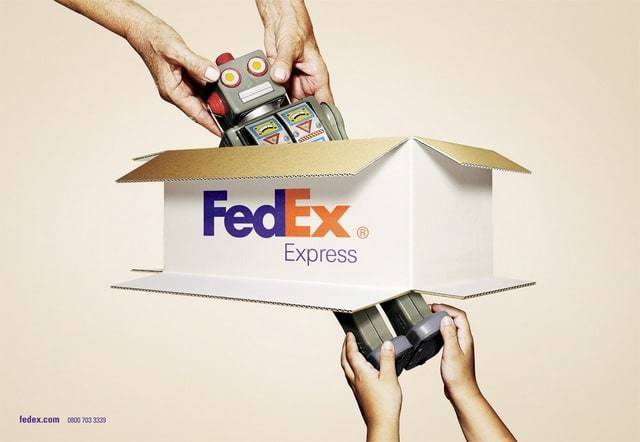Founded in 1973 by Frederick Wallace Smith, FedEx has come a long way to emerge as a leading player in the logistic and services industry serving more than 220 countries & territories across the globe. FedEx product & service portfolio consist of E-commerce, transportation and business service.
It acquired the Europe’s logistic giant TNT express in 2016 which helped it in gaining global competitive advantage apart from GENCO (acquired in FY15) and Bongo International.
Table of Contents
Segmentation, targeting, positioning in the Marketing strategy of FedEx-
FedEx, the leading logistics/ Delivery Company uses demographic and psychographic segmentation strategies to segregate the market in the group of customers with similar needs and wants.
Since FedEx serve customers from different segments, therefore, it uses differentiated targeting strategies.
Did you know?
As of 2022, FedEx reported an annual revenue of $93.5 billion, showcasing significant growth and resilience in the logistics sector. This impressive figure highlights FedEx’s successful global strategies and its ability to meet increasing demand in a changing market.
In April 2023, FedEx announced a strategic consolidation of its operating companies into a single organization. This move is aimed at enhancing operational efficiency and customer experience by streamlining services across FedEx Express, FedEx Ground, and other subsidiaries.
It uses price based positioning strategies to target the specific segment of the customer with their valued services.
Marketing mix – Here is the Marketing mix of Fedex.
Mission- “To develop mutually rewarding relationships with its employees, partners and suppliers”
Vision- “Not Available”
Tagline-“The World on time”.
Competitive advantage in the Marketing strategy of FedEx-
Modernising air fleet: Modernising its Aircraft fleet is one of the competitive advantages that FedEx have gained which is helping it to reduce its operational cost, structural cost, reduce fuel cost, and enhance the efficiency of its worldwide network. It has acquired 60 Boeing 757, 767-300F aircraft between years 2014 to 2016.
Focus on retail accounts: With the advent of technology, changing lifestyle and growth in the eCommerce market, FedEx has shifted its focus to small to medium size customer base, avoid less profitable accounts so as to get high ROA( return on assets ) and increase its profit.
SBU’s working collectively: Its Strategic business units operate independently in the market but work collectively to support each other in the meta-market which is helping the company in being competitively ahead of its competitors.
BCG Matrix in the Marketing strategy of FedEx-
FedEx operates in five strategic business units (SBU’s) namely FedEx Express, TNT Express, FedEx Freight, FedEx Ground, and FedEx Services.
Its FedEx Express, FedEx Freight, TNT express and FedEx business divisions operating in respective nations are starred in the BCG matrix. Since FedEx services are the supporting division for other existing businesses of FedEx and are therefore cash cow in the business matrix.
Distribution strategy in the Marketing strategy of FedEx-
Generating revenue of $ 50.4 billion in FY-16 and servicing more than 220 countries & territories was only possible due to the talent pool of more than 4, 00,000 employees FedEx employed worldwide. It replaced its 25 fleet aircraft in the year 2015 and ordered 50 new Boeing advanced B767 aircraft for distribution of its services effectively and efficiently on time.
Brand equity in the strategy of FedEx-
With high TOMA (top of mind awareness) & visibility, FedEx has established itself as a well-known brand in the transportation industry. It has been ranked 75 on Forbes list of World’s most valuable brand valued at $44.6 billion (market capitalization method) as of May 2016.
As per the Fortune Magazine list, FedEx has been ranked 12 in the list of World’s most admired company and ranked no. 1 in the industry it operates i.e. logistics/ delivery industry.
Competitive analysis in the Marketing strategy of FedEx-
The transportation/ logistics, and business services industry is highly competitive and faces competition on services and price front. It faces competition from local, regional, and international companies like UPS, DHL, Amazon express, and many others in the segment.
Market analysis in the Marketing strategy of FedEx-
Changing economic scenario, increasing cross-border business opportunities, changing government regulations, the opening of economies/ markets for foreign players in various sectors in the developing nations and increasing competitions, transportations of short product life cycles/ shelf life are some of the factors affecting the operations of the companies in this industry.
Customer analysis in the Marketing strategy of FedEx–
FedEx serves customers from different segments and different social classes. Customers include various industries, government organisations and individual customers who are looking for various logistics solutions.
Liked this post? Check out the complete series on Strategies


What does BCG stand for
I am currently completing an MBA program and have an assignment to complete of FedEx was just looking for supporting information and came across this article very informative but of course I have to sure this is accurate information
What does BCG stand for?
New Name for the Redskins:
Washington Fedskins: You only have to change one letter. Can represent Federal since located in Washington and also Fedex, sponsor.
I am currently doing some research into logistics companies and their target markets and found your article. You mentioned “FedEx, the leading logistics/ Delivery Company uses demographic and psychographic segmentation strategies to segregate the market in the group of customers with similar needs and wants. Since FedEx serve customers from different segments, therefore, it uses differentiated targeting strategies.” Considering that FedEx is a $50B company and major brand for shipping, I understand that it has to have a broad strategy for approaching different market segments. For B2C consumer markets in the United States, I am curious what FedEx considers to be their target market. Although it is a household name, it is rare that most consumers choose to send something FedEx over USPS or UPS. In B2B sales, FedEx may be a preference due to speed or ease of use, but in B2C sales, FedEx’s services are harder to consume (there are not FedEx stores on every corner like there are UPS stores, etc). Thus, I’m interested in their consumer targeting and understanding how they are view marketing to consumers. Thanks!